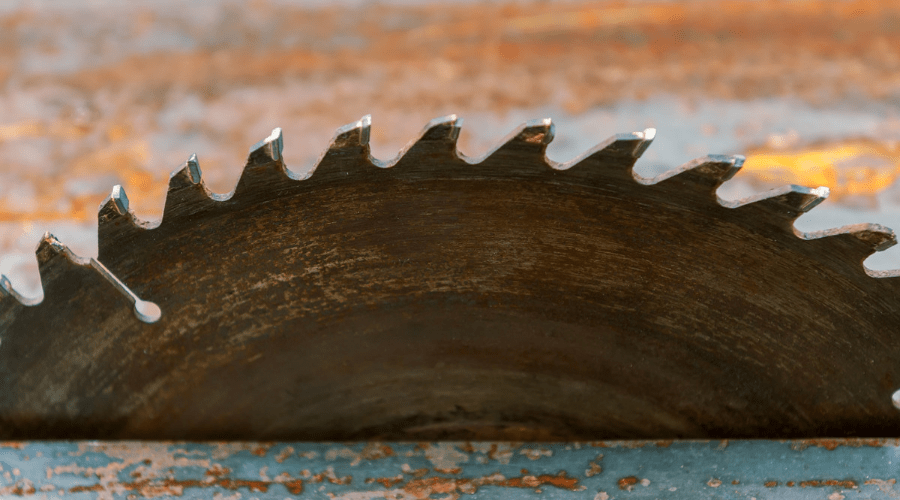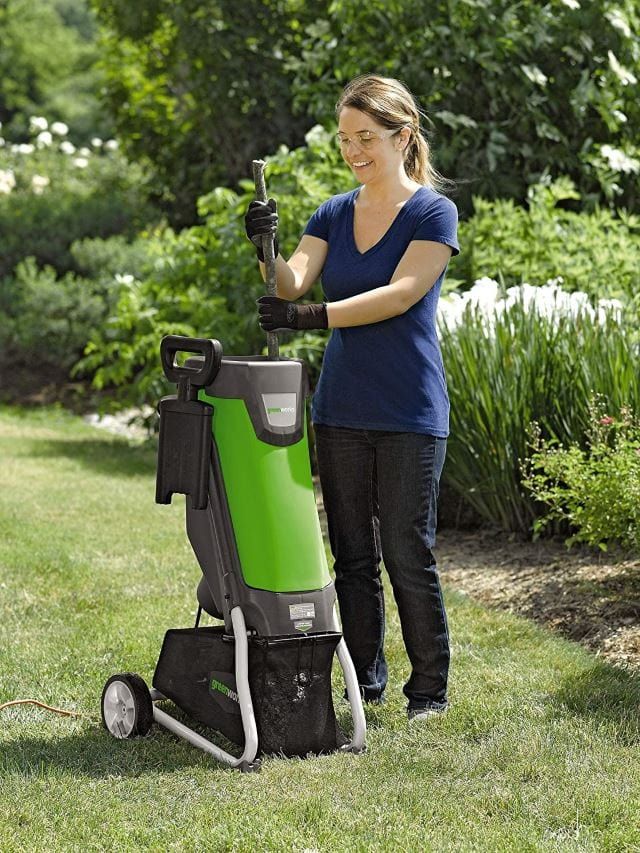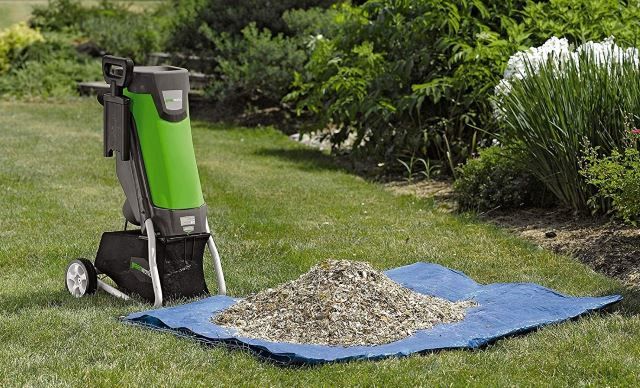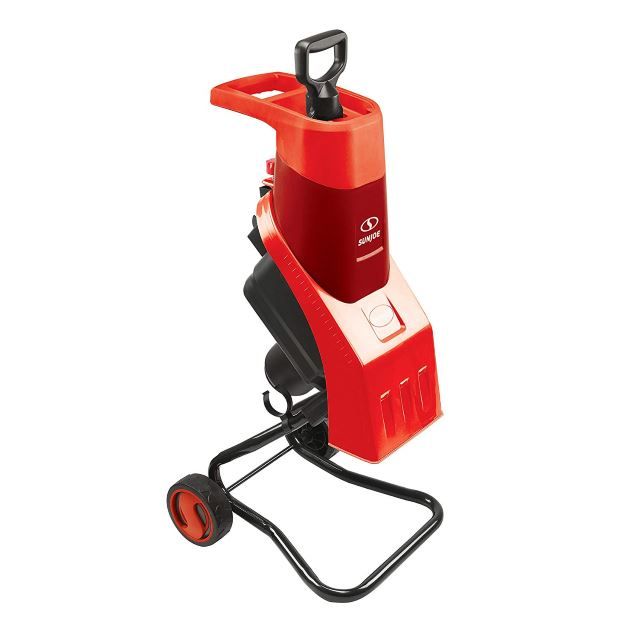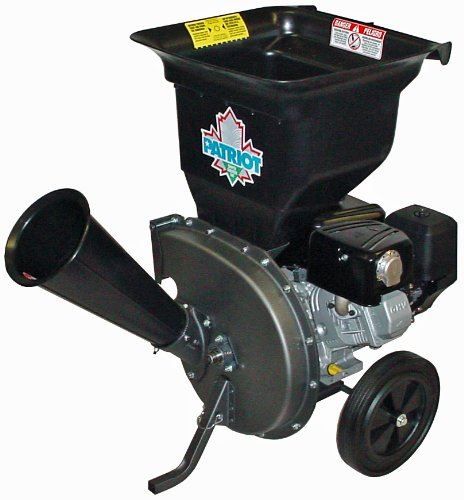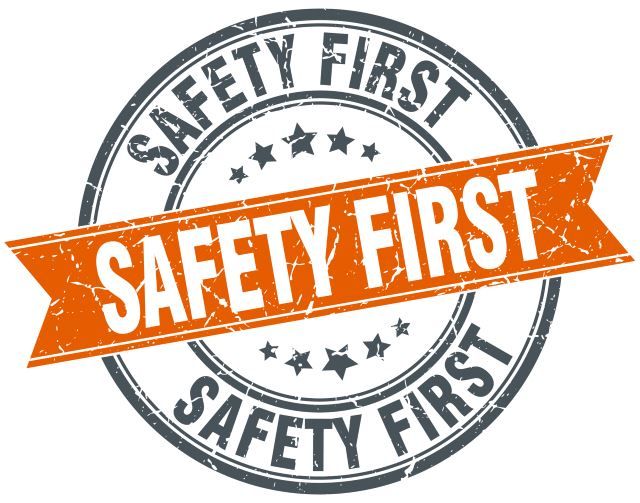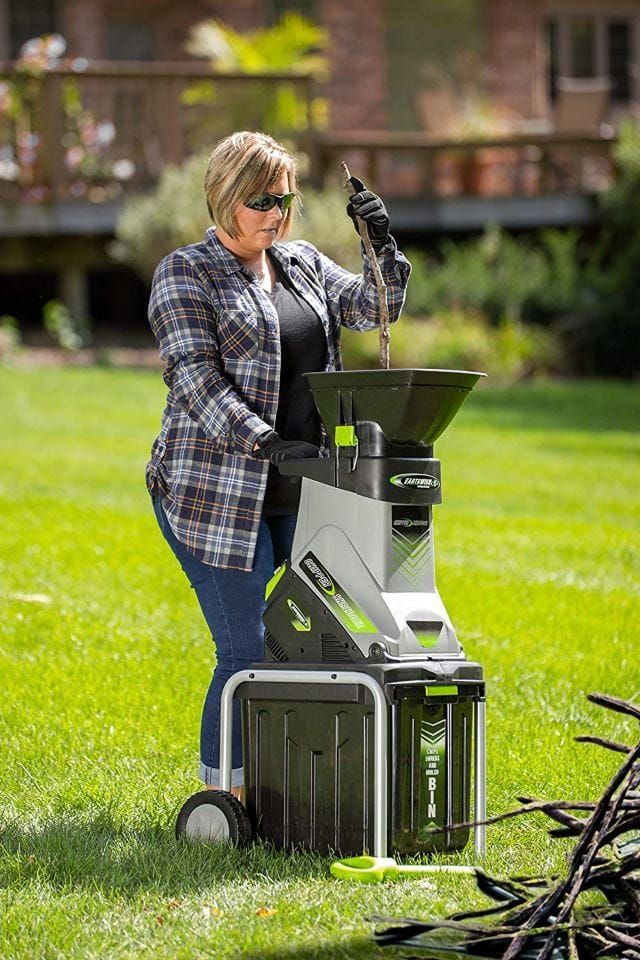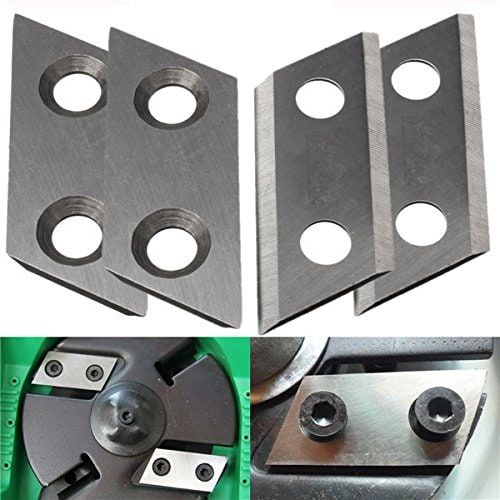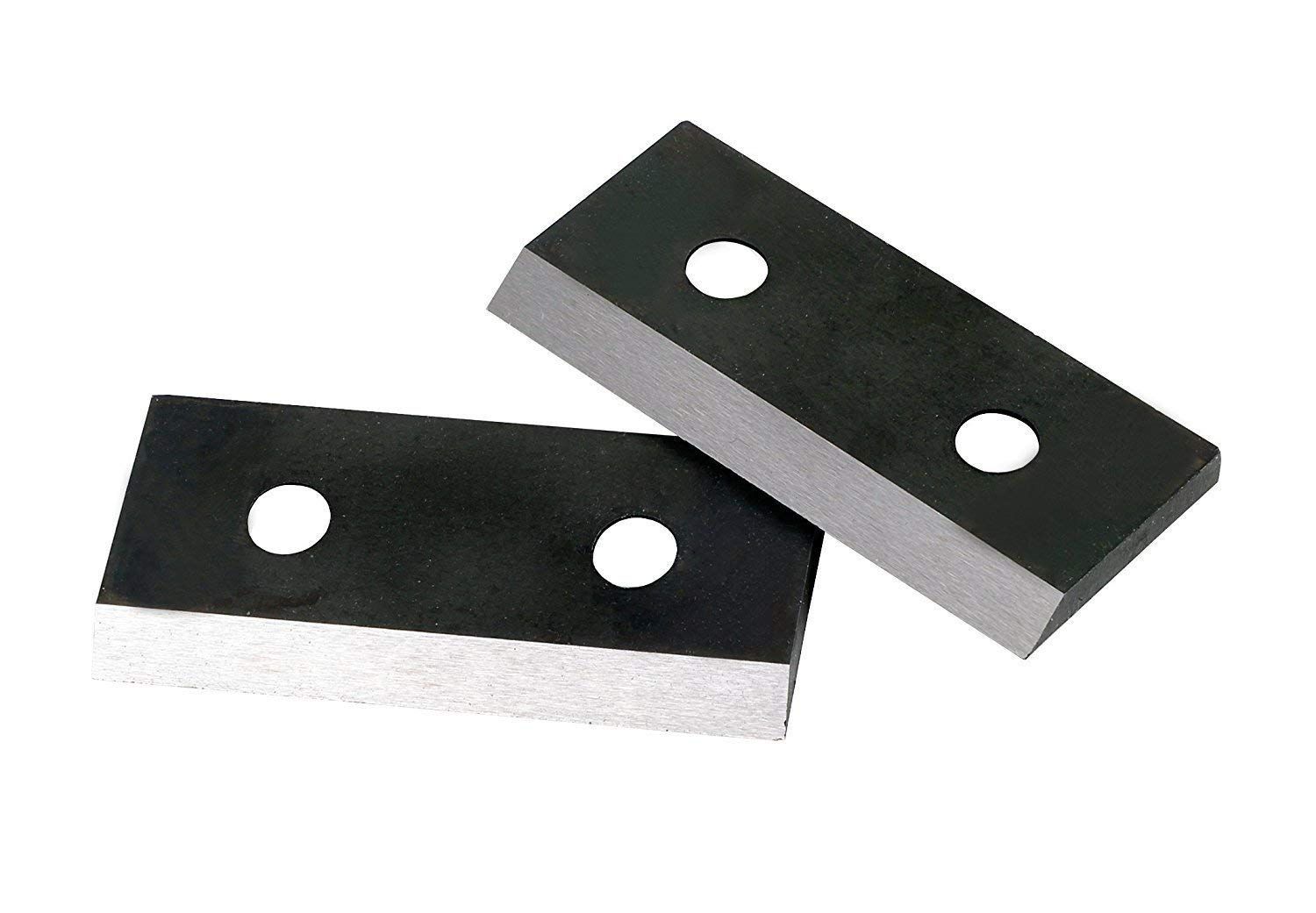You’ve had your wood chipper for a while now, and you’ve really enjoyed the ease with which you can care for your yard. You get the work done in a third the time and have more energy for other things, such as a game of catch with the kids, a barbecue with the neighborhood, or a solo jog down your favorite trail. Life is perfect…until it’s not. Suddenly, you’re having trouble getting the work done in a timely manner, and you’re finding that your wood chipper isn’t functioning up to par.
You check everything over, but you’ve performed regular maintenance and can’t find anything that isn’t working or needs a touch-up. That probably means the blades need to be sharpened. It’s nothing you’ve done wrong. It’s simply part of the regular maintenance that doesn’t need to occur quite as frequently.
A lot of people are terrified of the task, but here, you can learn what you should know about how to sharpen wood chipper blades, including what to do, who to trust, and how to be safe about it. This way, you can go about the task just as you would any other simple maintenance chore, like changing the oil.
What is a Wood Chipper?
A wood chipper is a great tool to have, especially in areas where regulations regarding yard debris and disposal are strict. In many areas, it’s illegal to put your trimmings and yard debris out for trash pickup, and in most areas, you’re no longer allowed to burn it. Even in places where burning debris is allowed, you never know when, during the summer, there is going to be a burn ban due to drought, and you could be stuck with tons of sticks and leaves that just get in the way.
Having a wood chipper to demolish all of this on the go, saving you time and effort, as well as assuring you aren’t stuck hauling the stuff away on your own, is a great idea. You’ll find that, not only is there less work involved, but the by-product is also useful to you, allowing you to kill two birds with one stone. With a little maintenance and taking the time to assure your blades are sharp, you’re in good shape to keep your lawn from being a hassle all year long.
Why a Wood Chipper?
As we mentioned, wood chippers are handy for a number of reasons. First, they save you time and energy. Rather than having to expend all your energy and take the whole day packing up the debris in bags, you take the wood chipper over it, and you’re done in one easy step. You also don’t have to worry about disposal of tons of debris, since you can recycle the wood chips you create in the cleanup process.
The fact that wood chippers are easy to maintain is another reason they make a lot of sense. Some machinery and lawn equipment is more difficult to care for, and that makes it almost as much of a hassle as cleaning up the yard in the first place. But there’s not a lot of difficult work involved in taking care of a wood chipper, making it a welcome addition to the collection of tools.
You could, by comparison, opt for a wood shredder. However, these have smaller engines and can’t handle larger pieces of debris like branches. You’ll also find that the blades aren’t equipped to care for larger yards. These function more like a weed eater than a wood chipper, so you’ll want to consider that before opting for this smaller solution to your yard burden. The upside is that many wood shredders don’t have blades to sharpen, though they can wear out much more quickly than a typical wood chipper.
Types of Wood Chippers
You’ll find that there are multiple types of wood chippers available, and the various options can have an effect on how often you’ll have to sharpen the blades, as well as how it would be done. But one thing’s clear, they’re just as valuable as a chainsaw if you have a large property to maintain.
DRUM CHIPPER
This type of wood chipper has blades set at regular intervals inside a large, horizontal drum. These are great when you have a very large load of debris, including materials that are quite fibrous, so you never run into a problem with having too much of a workload or the wrong materials to chip. However, because they are so large and powerful, they tend to use an enormous amount of energy. You’ll also find that the chips that come out aren’t all uniform in size.
Disk Chipper
Instead of the horizontal drum, this wood chipper has a vertical disk, which has blades set into it. Those blades cut the wood and debris at a 45-degree angle, which gives a great deal of uniformity in the way the chips come out. It’s also a far more energy efficient machine than a drum chipper and works quite fast. While it can handle fibrous material, this does slow the machine down, and it can add undue stress on the engine. It’s best to stick to small, thin branches and other smaller debris to avoid any problems with the chipper.
Screw Chipper
This particular type of wood chipper is slightly different in that it has a rotating piece much like a large, moving screw for a blade. This blade turns and pulls the wood through the chipper, giving you incredibly nice, uniform chips as an outcome. Keep in mind that one downfall here is that, in order to change the size of the chips that come out, you have to change the blade itself. Keep in mind that none of these particular wood chippers are industrial strength, which means you are still limited in what you can feed into them. However, on a normal basis, there is no homeowner job that is going to require you to feed into a wood chipper a branch that’s wider than 3 inches in diameter. Some wood chippers have interchangeable chutes so you can feed these larger pieces into them rather than only the small bits you’ve raked up out of the yard.
Engine Types
"Wood chippers, like other lawn equipment such as weed eaters and leaf blowers, come with two different types of engines. You can opt for an electric engine or a gas engine, depending on your needs."
Electric engines are more common for residential use since you don’t need something with industrial power. There are a lot of benefits that go along with choosing an electric motor, including:
- Clean operation – there are no emissions from an electric-powered motor, which is better for the environment and cleaner for you, so you aren’t inhaling fumes
- Less maintenance – because you are, for all intents and purposes, running the machine from a rechargeable battery, there are fewer moving parts and less maintenance required on electric wood chipper engines than on gas-powered engines
- Lighter weightless parts required mean less weight to start with, and since you don’t have to add fuel, there’s no added element to weigh the wood chipper down further, making it easier to lift and carry
- Cost efficient – being smaller and wielding less power than many gas-powered models, electric wood chippers tend to be less expensive
Keep in mind, however, that electric wood chippers are limited by power capabilities. You’re also limited in mobility since electric models need an outlet and are corded for operation. You can’t easily move them around for convenience, even if they are smaller and lighter.
Gas engines, too, have their upside when compared to electrically powered wood chippers, including:
- More power – these larger engines fed by a gas mixture rather than a battery are going to be far more powerful, working faster and with greater voracity than smaller electric models
- Larger loads – you can feed a gas-powered wood chipper larger items, as well as a greater overall workload, because they are more powerful, without harming the motor or any other part of the machine
- Mobility – despite being heavier, you aren’t tied to any particular power source from a wall or outlet, so you can take the wood chipper anywhere on the property you need it.
Of course, there are things to consider, such as the additional cost involved in a gas wood chipper. The unit itself is more expensive, and it requires more maintenance, as well as the cost of fuel, adding to the expense of operating it. You also have to spend more time on maintenance, as opposed to just sharpening the blades, which is the bulk of the maintenance on an electric wood chipper. Also, while you can haul it around wherever you like without worrying about a fuel source, it is heavier, and the machine will put out fumes that might be bothersome to you during operation. When choosing your wood chipper, keep in mind the tasks you’ll want to achieve. This will help you determine not only which kind of wood chipper you want but also the source of fuel that will work best for you.
Safety and Maintenance
Whichever type of wood chipper you choose, you need to take some very basic but vital safety precautions. As with any power tool, there are dangers associated with the operation if you aren’t properly prepared. This is especially true of tools such as this, meant to cut and chop and grab. In addition, you’ll need to make sure you keep up with any necessary maintenance for smooth, easy use, including sharpening the blades on your wood chipper when necessary. When using a wood chipper, you should be careful of the size load you feed to it. Despite the available capacity, it is safer to keep the load lighter than what the machine is rated to handle, simply to allow room for error. Feeding pieces and entire loads that are too large into the wood chipper can increase the risk of injury to you as the operator be causing the machine to get clogged and, therefore, discharge wood chips backward toward you or even to expel large items, which can hit you and cause blunt force trauma.
When it comes to clothing, you should protect yourself from danger as well.
- Tuck in shirt tails or other dangling items of clothing to avoid the chipper grabbing and pulling the way it will with debris. You should also assure you aren’t wearing loose or baggy clothing to avoid further risk of injury.
- Tie back long hair; there have been instances of wind blowing hair into the wood chipper as well, and this is something you definitely want to avoid. Try wearing a hat to protect yourself – preferably a hard hat, just in case.
- Wear protective gear, including safety goggles, gloves, and ear protection against the noise of the wood chipper.
When you’re actually working with the machine, use something other than your hands – a long branch or wood pole like a broomstick – to push items into the chipper. You also need to be extremely focused, as any distraction could lead to detriment. In this vein, you should also make sure to clean up the debris that is made by the wood chipper, making sure the area stays pristine, since you could easily slip, trip, or cut yourself on something expelled by the wood chipper. When it comes to maintenance, you’ll find differences between electric operated wood chippers and those that require gas. Here, we’ll cover the more complex maintenance routines required to keep your gas-powered wood chipper in good shape.
- You’ll need to drain the oil and change it at least once a season to ensure good operation. Otherwise, your filters could get clogged, or you could be wasting a great deal more fuel than necessary during operation.
- Remove the air filter cover to check the air filter at least once a year. Often, it will be relatively clean, and you need do little more than dust it off. Depending on the type of air filter you have, you may be able to clean it if it’s dirty. If not, you’ll need to replace it.
- As with any gas-powered engine, you have spark plugs that you need to check. You’re looking for corrosion more than anything else to determine if the spark plug is still good.
With these simple steps, you can keep your wood chipper operational as if it was brand new for several years.
Sharpening the Blades
Many wood chipper owners opt to take their blades to a machinist when it’s time to sharpen them. For some, it’s easier this way, considering there are some skill and understanding involved in doing it yourself. Plus, you need special machining tools to do the sharpening. The good news is, if you decide to sharpen your own wood chipper blades, you can use a wet grinder, which will work for a great many other tools you may already own as well, saving you money on professional services in other areas as well. Before you use the wet grinder, though, you need to prep the blades, using a chisel or knife or similar device such as a good scraper or a putty knife (that has a razor blade) for effort. You’ll have to take the pitch off on all sides. Once this is done, you can move to the wet grinder. Always check the specs on your particular wood chipper prior to doing something like this, as the settings you use may be different for a different brand or type of machine. But generally, the settings you use will be similar to what’s given here, as long as you aren’t using the unusual equipment.
- Set the table at 45 degrees.
- Set the miter at 90 degrees.
- Fill the catch tray (you won’t need the drip system). This will allow you to dip the blades in the water with each pass to avoid the blades overheating.
- Since some grinders can rotate in either direction, make sure you have things set so that the rotation is toward the cutting edge of the blades rather than away for the best results.
- Pass the blades slowly across the wheel in one smooth pass without too much pressure, not stopping but pulling straight through. You will likely see the water evaporate as you pass.
- Don’t expect to remove all chips in the blade. This is something that takes professional training or years of amateur practice. Instead, focus on the sharpness of the blades. They will shine all the way across and have no new levels, and you’ll need to be extremely careful at this point to avoid cutting yourself.
How often you sharpen your blades depends on how heavily you use them. As a rule, count time running rather than months of operation. For example, you may use the wood chipper for 10 hours in the first month of winter, whereas it could take you all summer to use that many hours. As a general rule, you should check the sharpness of your wood chipper blades at least every 10 hours to see if they need to be sharpened, and it is typically beneficial not to run them for more than 20 hours without a pass over the wet grinder. Depending on your level of expertise, you may be able to sharpen a single set of blades in a few minutes, or it could take about an hour. The time spent isn’t important, as long as you do it safely.
The Bottom Line
Wood chippers can be quite an asset, but you have to make sure to care for them properly, and you’ll have to monitor your use of the blades. Using dull blades can be dangerous, and it puts extra strain on the machine that could cause it to break down. Likewise, if you don’t have sharp enough blades, it may have to chomp harder and more times to complete a task, not only using excess energy but also causing you to have to push harder at the material your feeding it and risking ending up with a piece of clothing or hair also getting caught in the machine. Caring for the wood chipper blades, as well as the rest of the power tool, can be done at home or by a professional, but whatever your choice, be sure to get it done so you can benefit from the use of your wood chipper all year long.

